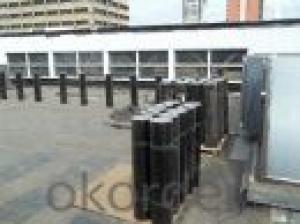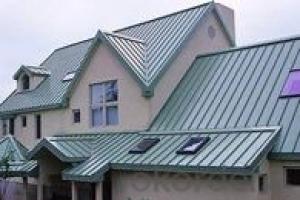SBS Modified Bituminous Waterproofing Membrane
- Loading Port:
- Shanghai
- Payment Terms:
- TT or LC
- Min Order Qty:
- 1000 m²
- Supply Capability:
- 200000 m²/month
OKorder Service Pledge
OKorder Financial Service
You Might Also Like
Product description
Packaging & Shipping
Package and transportation-- SBS waterproof membrane / APP waterproof membrane / Asphalt waterproof membrane for building waterproofing construction :
1. Torch on bitumen membrane sheets 4mm should be stored under dry and ventilated conditions.
2. Different types of membranes must be piled separately.
3. Under usual condition, storage period is one year since production date.
4. Membrane roll should be put vertically during transportation. It should be kept away from sunshine and rainwater.
.
Advantagee
1) Cold-applied construction with no open flame and self-adhesion without bonding agent make it safe, low- carbon, environmental, and economical.
2) Excellent adhesive performance guarantees the integrity of waterproof layer.
3) Good rubber elasticity, elongation and shear stress.
4) Good low-temperature property.
Applicable scope:
1) Widely used in the industrial and civil building roofing, underground, pool, tunnel, wooden and metal roofing.
2) Specially applied in the oil depot chemical factory, garment factory, and granary.
3) Especially used in cold places.
4) Tape used for sealing all construction material surfaces.
Storage:
Different types or specifications of products should be separated, not mixed.
Keep it dry and ventilated, protected from the sun or rain.
Storage temperature should never be higher than 45 °C. Pile up the membranes flatwise whose stockpile height never exceeds five layers. One layer is guaranteed if it is placed vertically.
Prevent it from inclination or In the process of transportation, it should be lying in case of inclination or lateral pressure. If necessary, cover it with felt-cloth.
Storage time is at least one year from manufacture date on if the product is under normal operation of storage.
Technical Parameters
Item | Index | ||||||
1 | Thickness of resin layer of the middle fabric ,mm≥ | - | - | 0.40 | 0.40 | 0.40 | |
2 | Tensile performance | Max tensile strength,N/cm ≥ | - | 120 | 250 | - | 120 |
Tensile strength,NPa ≥ | 10 | - | -10 | - | - | ||
Max elongation% ≥ | - | - | 15 | - | - | ||
Breaking elongation % ≥ | 200 | 150 | - | 200 | 100 | ||
3 | Heat treatment size change rate%≤ | 2.0 | 1.0 | 0.5 | 0.1 | 0.1 | |
4 | Cold bonding | -25°c No cracks | |||||
5 | Watertightness | 0.3mPa,2h waterproof | |||||
product show
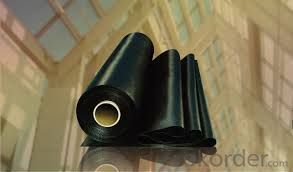
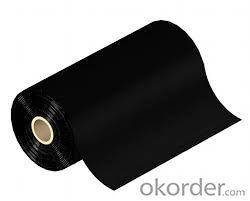
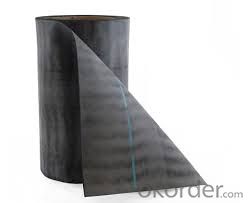
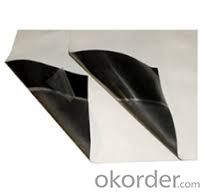




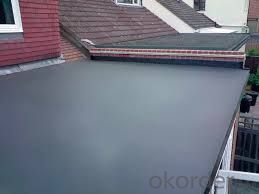
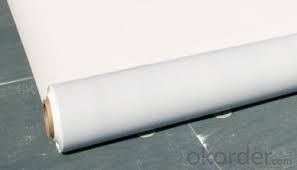
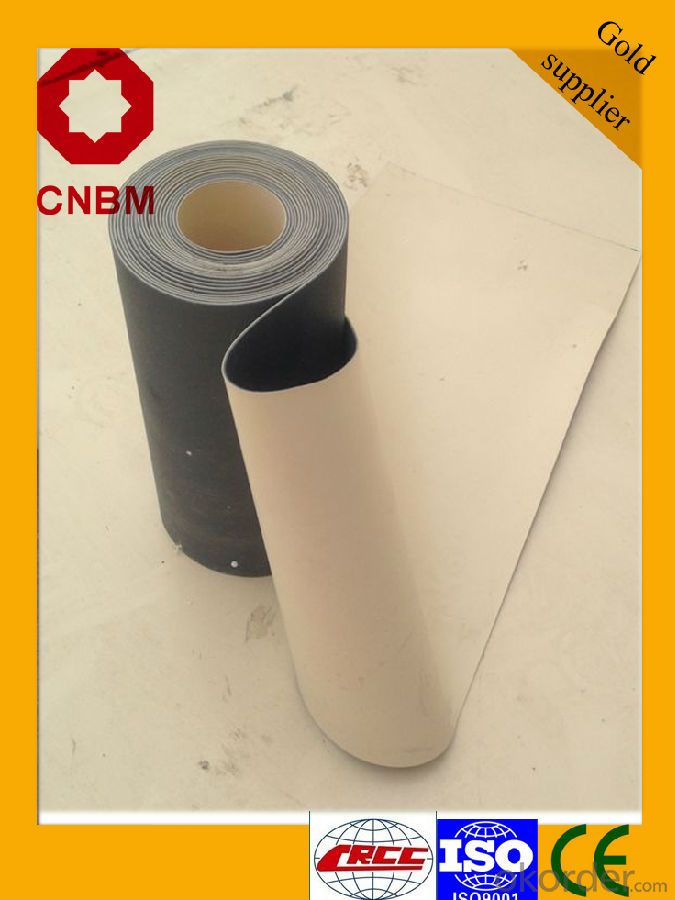
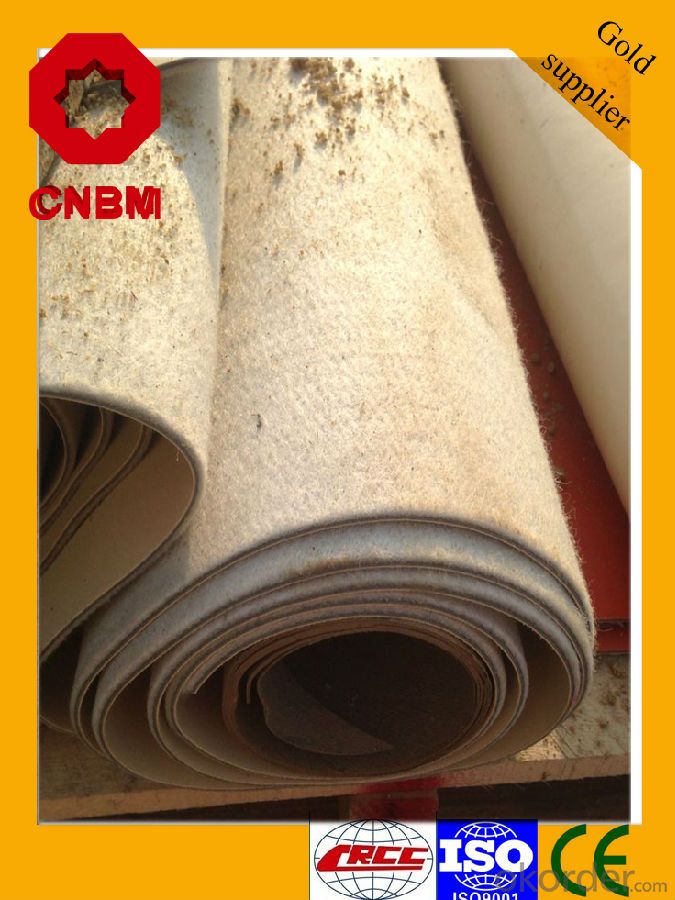
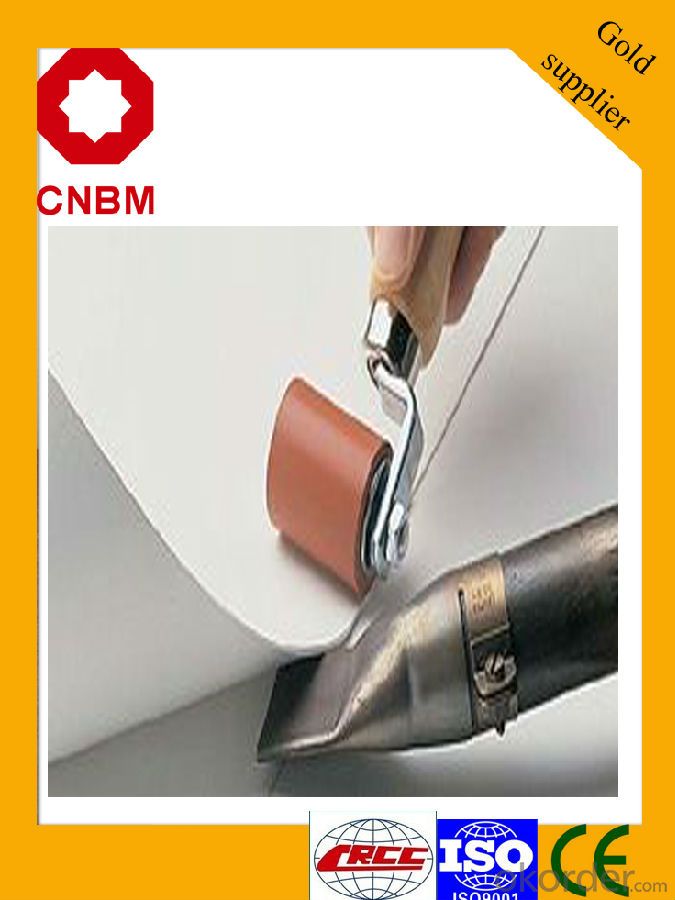

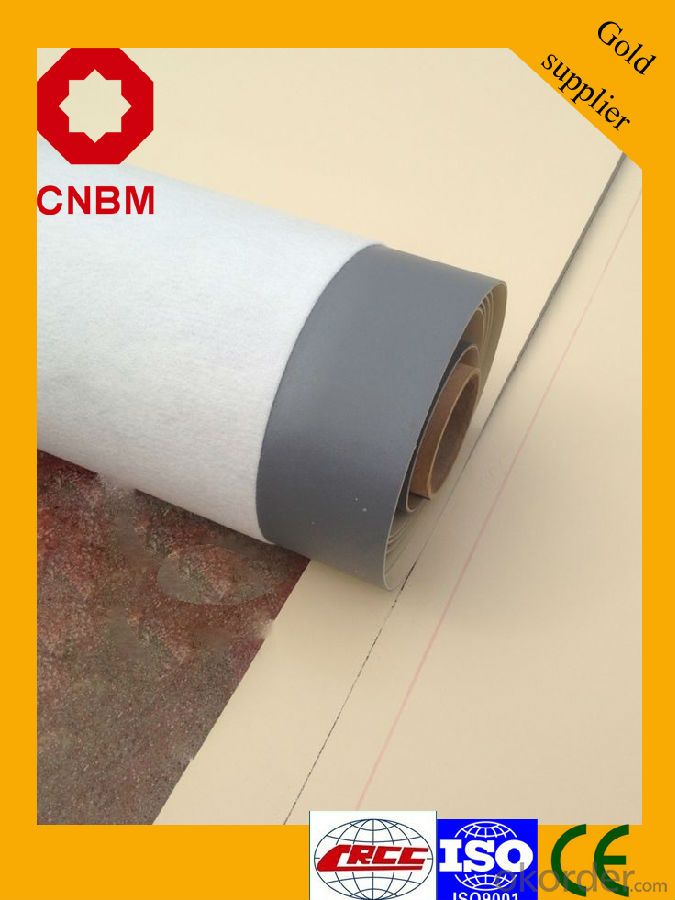
FAQ
Q: What's the de6abf1fe186f8d58506cbcfe46eed814d.jpglivery time ?
A: 3-5 days for 1-600 rolls, 10-15 days for container.
Q: What's the payment terms ?
A: TT/LC
Q: How do you make replacement with quality problems ?
A: New replacement will be packed into your next order or send to you directly after receive video or photo about quality problems.
- Q:Can a waterproofing membrane be used for stadiums or sports fields?
- Yes, a waterproofing membrane can be used for stadiums or sports fields. Waterproofing membranes are commonly used in construction projects to prevent water infiltration and protect the underlying structure from moisture damage. In the case of stadiums or sports fields, where there is constant exposure to the elements, including rain, snow, and irrigation, a waterproofing membrane can be an effective solution to prevent water damage to the foundation and other structural elements. Additionally, a waterproofing membrane can help to maintain the integrity and durability of the playing surface, preventing water from seeping into the field and causing issues such as unevenness, soft spots, or slippery conditions. Overall, the use of a waterproofing membrane can contribute to the longevity and performance of stadiums and sports fields by creating a barrier against moisture and its detrimental effects.
- Q:Can waterproofing membranes be used on concrete floors?
- Yes, waterproofing membranes can be used on concrete floors. Waterproofing membranes are commonly used in construction to prevent water penetration and protect the underlying structure. When applied to concrete floors, these membranes create a barrier that prevents water from seeping through and causing damage. Waterproofing membranes can be particularly useful in areas such as basements, bathrooms, and outdoor patios where water exposure is common. They help to maintain the integrity of the concrete floor and protect it from moisture-related issues like cracking, spalling, and mold growth.
- Q:Is a waterproofing membrane resistant to hydrostatic pressure?
- Yes, a waterproofing membrane is designed to be resistant to hydrostatic pressure. It is specifically engineered to withstand the force exerted by water and prevent it from penetrating through the membrane.
- Q:Can waterproofing membranes be used on precast concrete panels?
- Yes, waterproofing membranes can be used on precast concrete panels. These membranes are designed to provide an effective barrier against water penetration, protecting the concrete from moisture damage. They can be applied directly to the surface of precast concrete panels, ensuring their long-term durability and preventing water-related issues such as cracking, spalling, or corrosion.
- Q:Does a waterproofing membrane require any specific cleaning or maintenance procedures?
- Yes, a waterproofing membrane does require specific cleaning and maintenance procedures. Regular cleaning of the membrane surface is necessary to remove any dirt, debris, or organic materials that may accumulate over time. It is recommended to use mild soap or detergent and a soft brush or sponge for cleaning. Additionally, periodic inspections should be conducted to check for any damage, cracks, or leaks in the membrane, which should be promptly repaired. Regular maintenance and proper care are crucial to ensure the long-term effectiveness and durability of the waterproofing membrane.
- Q:Can a waterproofing membrane be used in conjunction with tile or stone installations?
- Yes, a waterproofing membrane can definitely be used in conjunction with tile or stone installations. In fact, it is highly recommended to use a waterproofing membrane in wet areas such as bathrooms, showers, and kitchen backsplashes to prevent water damage and moisture penetration. A waterproofing membrane acts as a barrier that prevents water from seeping through the tile or stone and reaching the underlying layers, such as the subfloor or wall. It helps to protect the structure and prolong the lifespan of the installation. There are various types of waterproofing membranes available, including liquid-applied membranes, sheet membranes, and fabric membranes. These membranes can be applied to the substrate before the tile or stone is installed, creating a waterproof layer that ensures the area remains dry and free from water-related issues. Using a waterproofing membrane not only provides protection against water damage but also helps to prevent the growth of mold and mildew, which can be harmful to both the installation and the health of the occupants. It is important to note that the proper installation of the waterproofing membrane is crucial for its effectiveness. It should be applied according to manufacturer guidelines and best practices to ensure a tight seal and complete coverage. Overall, incorporating a waterproofing membrane with tile or stone installations is a wise choice, as it enhances the durability and longevity of the project while providing peace of mind against potential water damage.
- Q:Can a waterproofing membrane be used in geotechnical applications?
- Indeed, geotechnical applications can make effective use of waterproofing membranes. These membranes are commonly employed to safeguard structures against water infiltration and are applied to various surfaces such as roofs, basements, and foundations. In geotechnical applications, these membranes serve the purpose of preventing water from seeping into the soil, thus averting erosion and stabilizing slopes. They can be positioned either horizontally or vertically to establish a barrier that hinders water penetration, which proves particularly advantageous in retaining walls, embankments, and dams. Furthermore, waterproofing membranes can be used to regulate water flow and enhance drainage in geotechnical projects. All in all, incorporating a waterproofing membrane into geotechnical applications can significantly enhance the longevity and performance of structures while effectively safeguarding them against water-related issues.
- Q:Can a waterproofing membrane be applied to existing structures?
- Yes, a waterproofing membrane can be applied to existing structures. The application of a waterproofing membrane is a common and effective method used to prevent water infiltration and damage to buildings. Whether it is a concrete structure, a roof, or a basement, waterproofing membranes can be installed on the exterior or interior surfaces to create a barrier against water penetration. There are different types of waterproofing membranes available, such as liquid-applied membranes, sheet membranes, and spray-applied membranes, which can be chosen based on the specific requirements of the structure. The process of applying a waterproofing membrane to an existing structure typically involves thorough surface preparation, including cleaning, repairing any existing cracks or damages, and ensuring a smooth and even surface. Once the surface is prepared, the membrane is applied using the recommended method, ensuring proper adhesion and coverage. Waterproofing membranes are designed to withstand environmental factors, such as UV rays, temperature fluctuations, and water pressure, providing long-lasting protection to existing structures. However, it is important to consult with a professional waterproofing contractor to assess the condition of the structure and determine the most appropriate and effective waterproofing solution.
- Q:Can a waterproofing membrane be used on roofs with skylights?
- Certainly, roofs with skylights can benefit from the use of a waterproofing membrane. It is strongly advised to employ a waterproofing membrane around skylights in order to prevent water infiltration or leakage. Skylights have the potential to become weak points in a roof system, as they form openings that can let water seep through if not adequately sealed. The application of a waterproofing membrane around the skylights serves to establish a watertight barrier that safeguards the roof from any potential leaks. Furthermore, a waterproofing membrane also offers added protection against external factors such as UV rays and changes in temperature, thereby extending the lifespan of both the skylights and the roof itself.
- Q:Are waterproofing membranes resistant to chlorine exposure?
- Waterproofing membranes can vary in their resistance to chlorine exposure. Some membranes are specifically designed to be resistant to chlorine and are commonly used in applications where chlorine exposure is expected, such as pool decks or water treatment facilities. These membranes are typically made with materials like PVC or TPO that have inherent resistance to chlorine and can withstand prolonged exposure without significant degradation. However, it is important to note that not all waterproofing membranes are chlorine-resistant. Some membranes, particularly those made with materials like EPDM or bitumen, may not be as resistant to chlorine and may experience deterioration or damage when exposed to chlorine for extended periods. To ensure the longevity and effectiveness of a waterproofing membrane in a chlorine-rich environment, it is crucial to select a membrane that is specifically designed and tested for chlorine resistance. Consulting with a waterproofing professional or manufacturer can help determine the most suitable membrane for the specific chlorine exposure conditions.
1. Manufacturer Overview |
|
|---|---|
| Location | |
| Year Established | |
| Annual Output Value | |
| Main Markets | |
| Company Certifications | |
2. Manufacturer Certificates |
|
|---|---|
| a) Certification Name | |
| Range | |
| Reference | |
| Validity Period | |
3. Manufacturer Capability |
|
|---|---|
| a)Trade Capacity | |
| Nearest Port | |
| Export Percentage | |
| No.of Employees in Trade Department | |
| Language Spoken: | |
| b)Factory Information | |
| Factory Size: | |
| No. of Production Lines | |
| Contract Manufacturing | |
| Product Price Range | |
Send your message to us
SBS Modified Bituminous Waterproofing Membrane
- Loading Port:
- Shanghai
- Payment Terms:
- TT or LC
- Min Order Qty:
- 1000 m²
- Supply Capability:
- 200000 m²/month
OKorder Service Pledge
OKorder Financial Service
Similar products
New products
Hot products
Hot Searches
Related keywords


